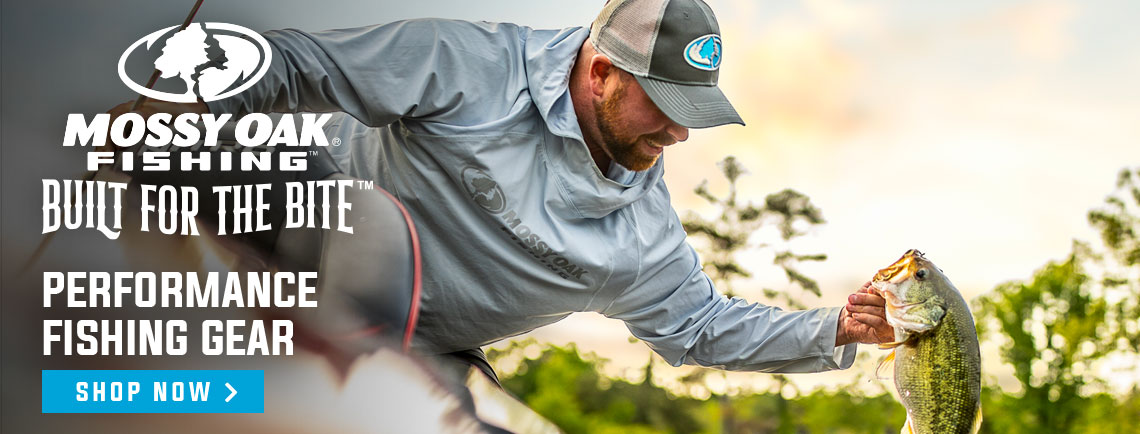Jeremy Duckett
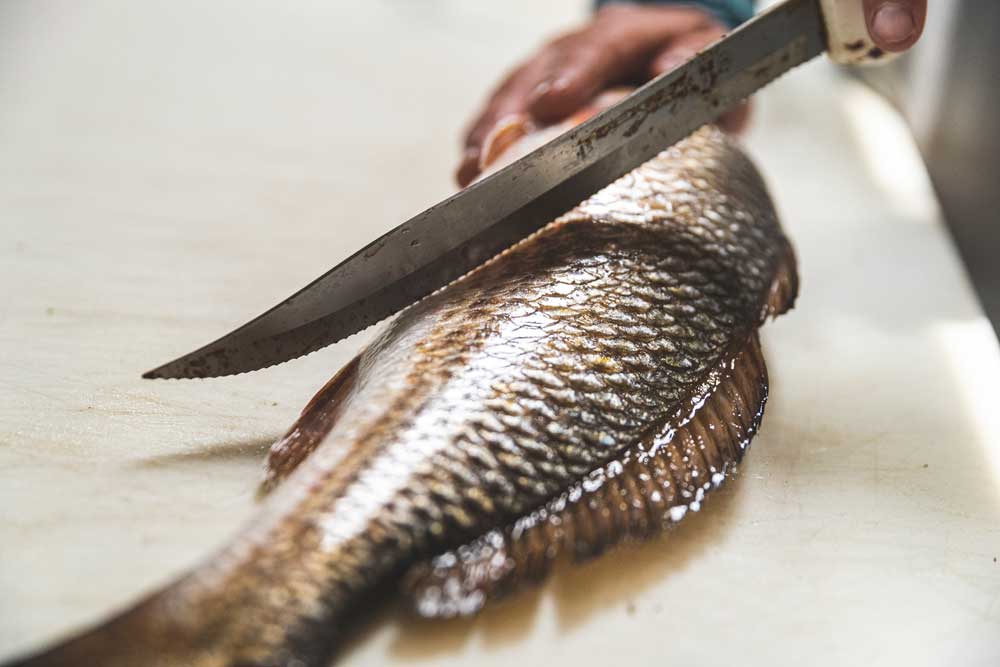
As sportsmen, we strive to respect the harvest that we made on any given adventure. In order to do that, preservation starts with ensuring you don’t waste anything. When you think of filet knives, you probably picture something like the fork-and-knife combo steak knives that your grandmother had in her cutlery drawer. However, modern filet knives are nothing like those old-fashioned versions with wooden handles and blades that were always dull.
Filet knives are a specific type of knife designed to help a fisherman filet their catch efficiently. The right filet knife makes it easy to carve out beautiful filets from almost any piece of fish or game. Selecting the right filet knife requires some research and attention to detail before you buy one.
HOW TO CLEAN AND FILET A YELLOWFIN TUNA
There are many different manufacturers of these knives, each of which has its own attributes. But whether you’re buying online or in person, understanding what to look for when making this purchase is essential. Keep reading for our ultimate guide on how to select a quality filet knife. I personally keep three in my kitchen and one in my fishing pack.
Basics To Understand Before Buying A Filet Knife
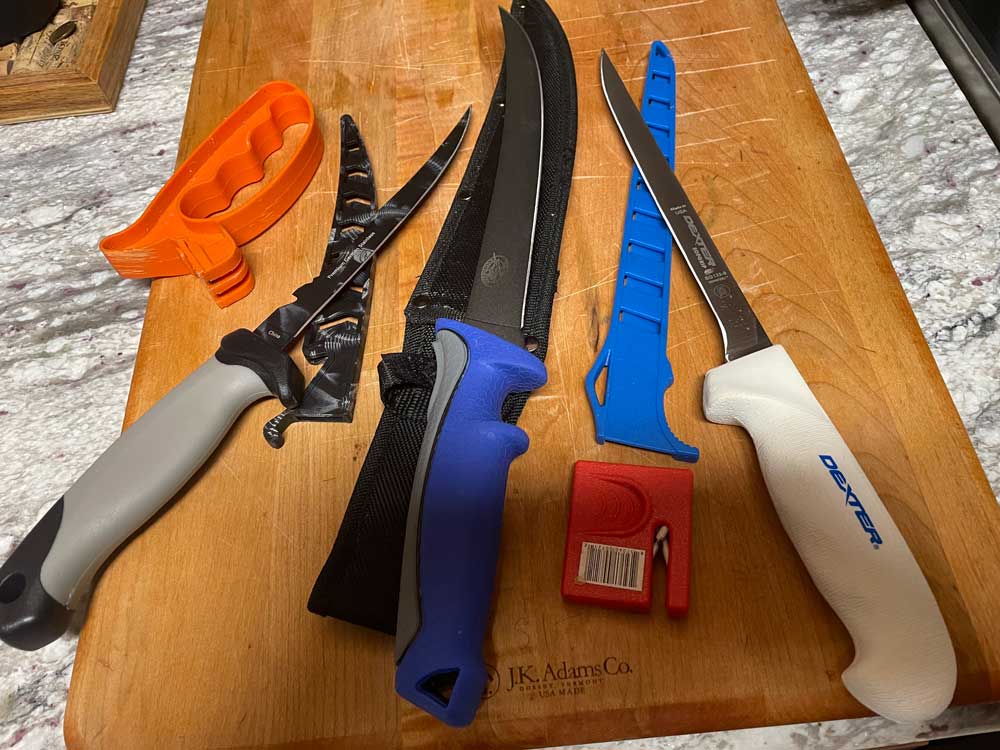
Before you even start shopping, there are some basics to understand about filet knives and what they can do. They are a very specific type of knife designed for a certain type of cut. A filet knife's blade is very thin and flexible. This allows you to easily cut through skin and meat with ease. The thin, flexible blade also allows you to work around all unwanted bones for maximum yield.
You will want to decide if you want a traditional filet knife or a filet knife with a serrated edge. A serrated edge also works for things other than fish, such as meat and bread. While considering the perfect filet knife for processing your offshore catch, you will want to opt for the traditional filet knife.
Filet knives are different from boning knives. Boning knives are used more for removing meat from bones where some of those bones may need to be separated from each other. They may look similar, but the characteristics are very different.
TIPS FOR CHOOSING THE RIGHT HUNTING KNIFE
Material Is Key When Selecting A Quality Filet Knife
The material used in the handle and the blade of your filet knife is extremely important. You can’t just choose the first filet knife you see and expect it to last you a lifetime. You need to understand the various materials available and which ones are best for your needs.
The two most common materials used to create filet knives are carbon steel and stainless steel. Carbon steel is more expensive and heavier than stainless steel, but it holds its edge longer. Carbon filet knives also have a reputation for being easier to sharpen. Stainless steel is lighter in weight and much more affordable than carbon, but it requires more frequent sharpening and isn’t quite as good for edge retention.
However, to be fair, the quality of stainless steel has greatly improved since it was first introduced. Many modern stainless steel knives rival carbon steel in quality.
Blade Construction is the Second Most Important Factor
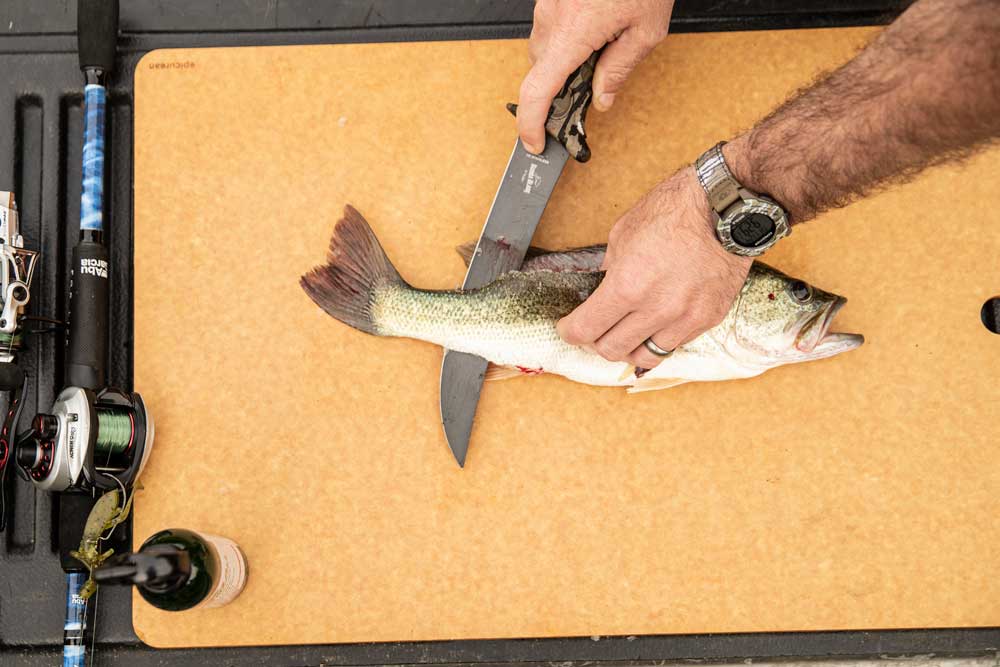
After the material of the blade, you also need to consider its construction. There are many different types of filet knives, each with their own characteristics. You’ll want to pay close attention to the way the blade is put together in order to select the right knife for your needs.
The single-edge knife is the most traditional type of filet knife. It has a single blade that runs along one side of the knife. The double-edge knife has two blades on either side of the handle.
Double-edge knives are great for people who like to cut crosswise through the meat in addition to lengthwise. If you prefer just to cut lengthwise, a single-edge filet knife may be a better choice.
Handle Construction Is Also Very Important
Most filet knives are made with wood or plastic handles. However, you can also find models that have handles made from stainless steel or other materials.
Wood handles are easy to clean and resist bacteria, but they can crack or break if you drop the knife or if it gets wet. Wood also tends to stain easily. Wood is also more porous than plastic, which means that it can absorb bacteria more easily. If you use a wood-handled filet knife in a kitchen where there is a lot of cross-contamination, it can easily become contaminated. If you choose a wood-handled filet knife, you’ll want to consider having it professionally cleaned.
However, a plastic-handled filet knife can also become contaminated if it’s not properly cleaned after each use. Dexter-Russell now provides “Sani-Safe” handles that are easy to sterilize and avoid scent contamination down the road. No one wants their equipment to have the “fish-funk” that they can’t get rid of.
The construction of the handle can provide you with the comfortable feel you may need. Some handles are bigger, pistol grip, or softer for more grip and feel. Ultimately, the handle is what will provide you the safety factor you’re looking for. Strongly consider these options based on YOUR personal preference. If you aren’t comfortable using the knife, don’t use it.
Importance of Balance When Selecting a Knife
When you hold any knife, it should feel like an extension of your arm. If you have a heavy, unbalanced knife, it will be a struggle to use it properly. Balancing a filet knife is actually very easy.
You just have to make sure that the handle is heavy enough to counter the lightness of the blade. If the handle is too light or too heavy, it will be very awkward to use the knife. That’s especially true if you have larger hands.
A balanced filet knife will be easy to use. It won’t tire you out quickly and it won’t make you feel frustrated. This is a consideration for knives geared towards processing larger fish such as grouper, amberjack, and tuna.
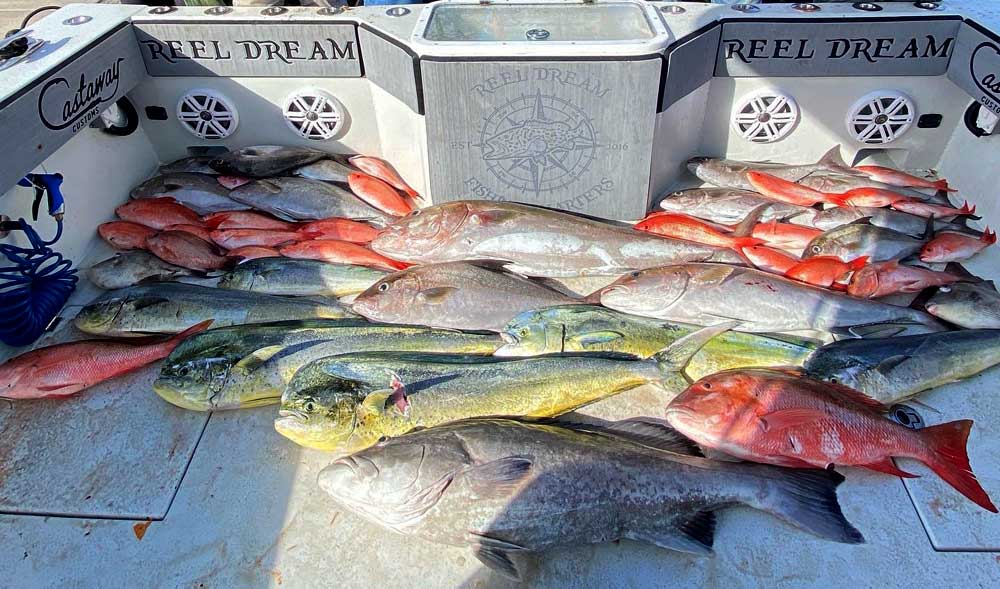
How to Test a Filet Knife for Quality?
A filet knife should be lightweight and easy to handle. It should also be very sharp, with a blade that slices easily through fish, meat and bones. You can test the quality of various filet knives to get a sense of which ones are better than others.
If you can find a store that allows you to test-cut a few pieces of vegetables or meat, that’s even better! One way to test the quality of a filet knife is to slice through a piece of paper. A good filet knife will slice through the paper cleanly. A dull blade will tear the paper, while a sharp blade will cut cleanly through it.
However, be careful when slicing paper with a filet knife. These knives are designed for slicing soft, fleshy foods, not paper. It may surprise you. The sharpness of the blade gives the filet knife its purpose.
The Bottom Line
A good filet knife is an essential part of any fisherman's toolbox. We live and die by these. Once you find your preferred filet knife, you will know it. You will be proud to show off your catch and might even post Instagram pics of that giant mutton snapper filet you just cut.
Not all knives are created equal and not all knives are worth the price they are sold for. You can find an extremely high quality filet knife at an extremely affordable price. You can also find one that will be a family heirloom at a much more “memorable” price.
If you take care of your knife, it will take care of you. Go fill that freezer with good hook sets!

